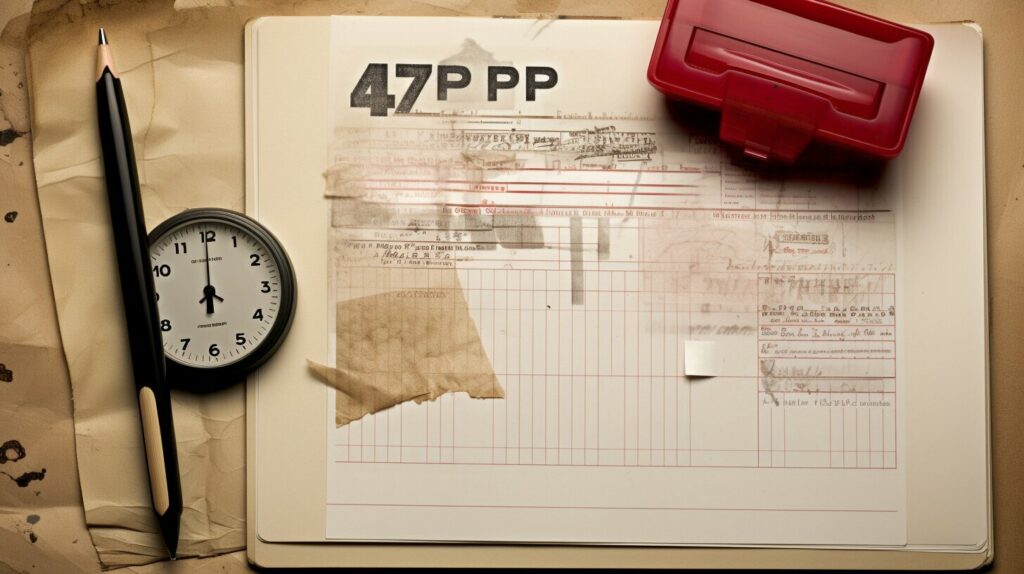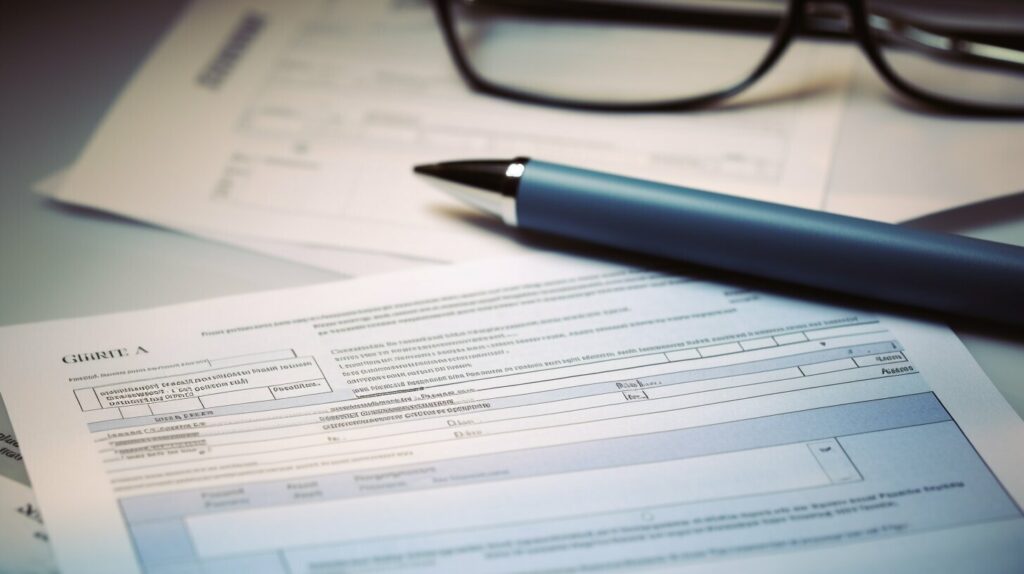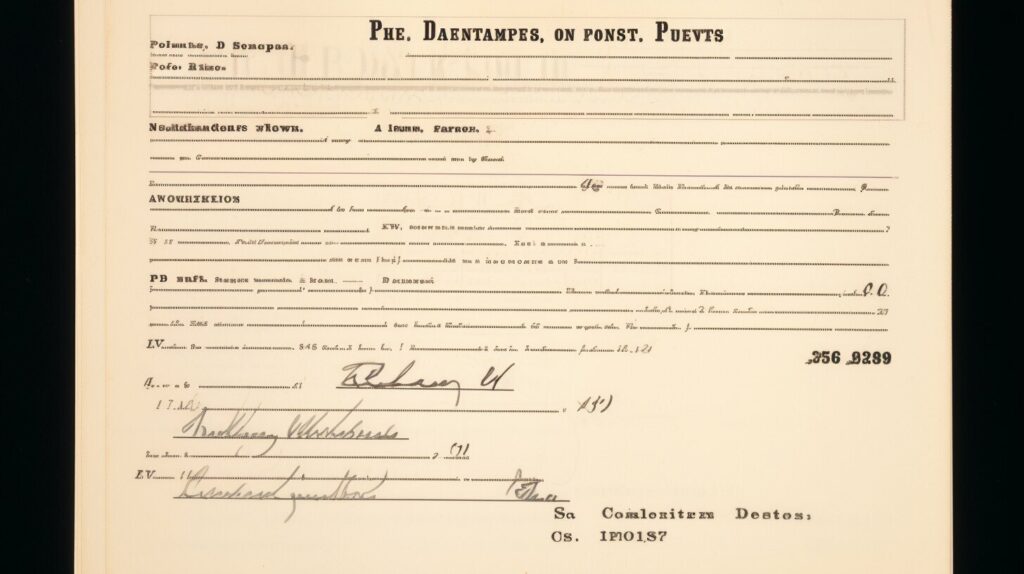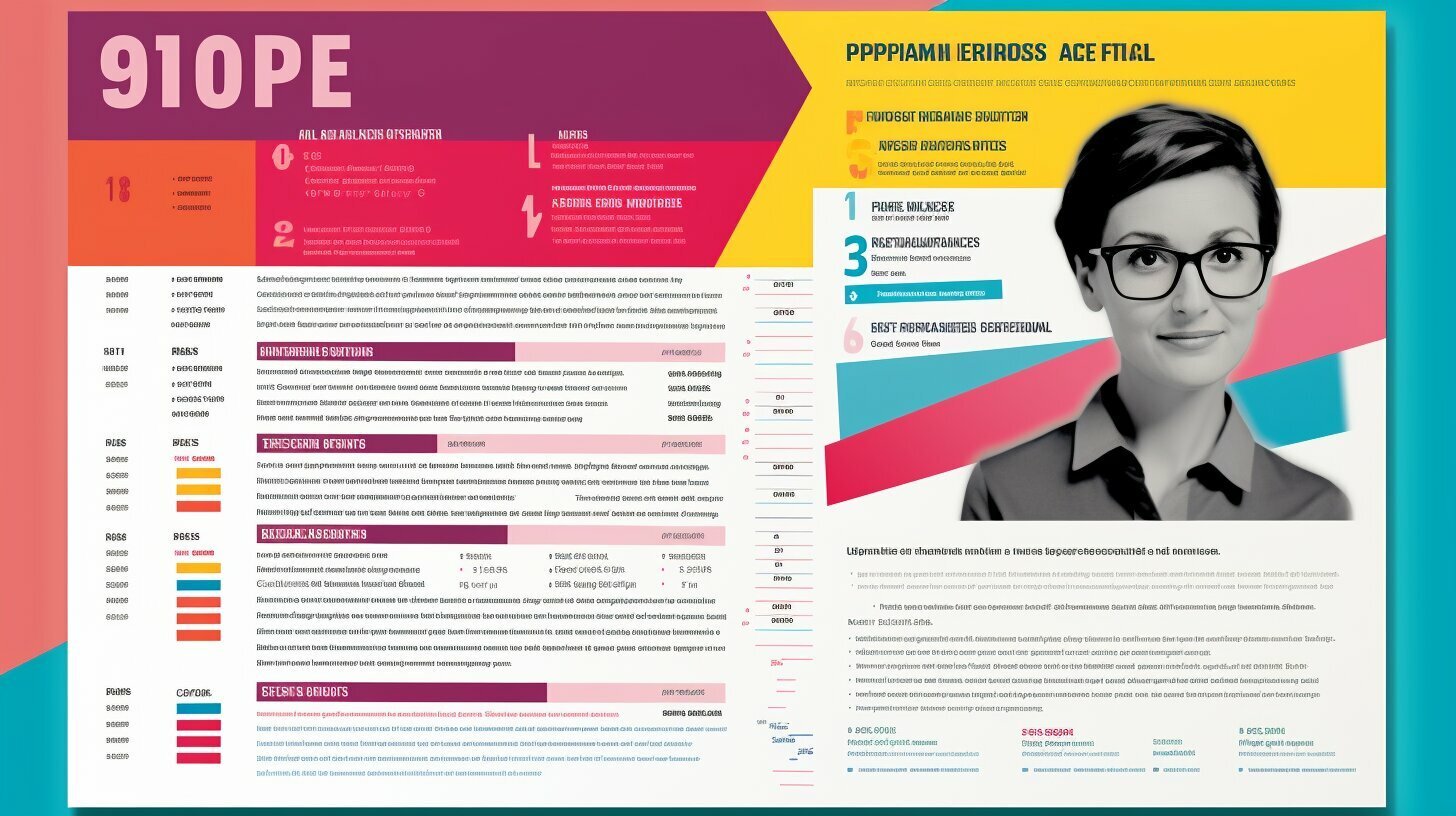If you are a working individual based in the UK, then it is essential to understand the purpose and significance of a P45 tax document. A P45 is a document that contains essential information regarding your tax payments and employment status.
Whether you are starting a new job or leaving an old one, you will receive a P45 as part of the employment transition process. Understanding what a P45 is and how it affects your tax affairs is crucial for maintaining your financial records accurately.
Key Takeaways
- A P45 is a tax document that contains information about your tax payments and employment status
- It is essential to understand the significance of a P45 for your financial records
- Receiving a P45 is a fundamental part of the employment transition process
What is a P45?
If you’re working in the UK, you’ve probably been issued a P45 at some point in your employment journey. Put simply, a P45 is an important document that details your employment history and tax information with a specific employer.
It is usually given to you by your employer when you leave a job, whether it be due to resignation, redundancy, or retirement. Your P45 contains important information such as your National Insurance (NI) number, tax code, and earnings to date for the current tax year.
Keeping your P45 safe is important as it serves as a record of your previous employment, which can be valuable for future reference or legal purposes. Additionally, a P45 is required when starting a new job as it provides your new employer with information about your previous earnings and tax payments.

Note: The image above shows what a P45 form typically looks like.
Purpose of a P45
Now that you know what a P45 is, let’s explore its purpose. A P45 serves as a crucial document in your employment journey. It contains important information about your employment history and income, which is necessary for accurate tax reporting. When you leave a job, your employer must provide you with a P45 which you must pass on to your new employer.
A P45 is essential for ensuring that you are paying the correct amount of tax and national insurance contributions. It can also impact any government benefits you may be entitled to, such as Jobseeker’s Allowance or Working Tax Credit. Without a P45, you may experience delays or errors in processing your tax affairs or benefits.

Additionally, if you do not provide your new employer with a P45, you may end up paying too much tax. This is because your new employer will use a temporary tax code until they receive your P45 information. As a result, you may pay tax at a higher rate than necessary.
It is important to understand the purpose of a P45 and how it impacts your employment and tax affairs. Now that you have a clear understanding of its significance, let’s move on to how you can obtain a P45.
Obtaining a P45
If you’re leaving your current employment, your employer is required by law to provide you with a P45 document. This document includes details of your employment and earnings up until the date of leaving and is an essential tax document that you will need to give to your next employer or HM Revenue and Customs (HMRC).
The process of obtaining a P45 is straightforward, and you don’t need to do anything yourself. Your previous employer will issue you with the P45 form either on your last day of work or shortly after. If you haven’t received it, contact your employer to request it.
It’s important to note that you should check your P45 for accuracy. If there are any discrepancies, inform your employer immediately to avoid any issues that could arise when you start your new job. Your new employer will use the information on your P45 to calculate your tax code and deductions, so it’s vital to ensure that the details are correct.
Once you have your P45, keep it in a safe place as you may need it in the future for tax purposes. If you lose your P45 or need a new one, you can contact your previous employer and request a duplicate copy.

Important information to look out for on your P45
Your P45 consists of four parts – Part 1, Part 1A, Part 2, and Part 3. Part 1 and Part 1A are for you to keep while Part 2 and Part 3 should be given to your new employer or HMRC.
Part 1 shows your tax code and salary up to your date of leaving. Part 1A shows how much tax you paid in the current tax year. Part 2 is sent to HMRC by your previous employer, and it shows your income and tax paid up to your date of leaving. Part 3 is for your new employer and shows the tax code to use for your new job.
It’s important to keep your P45 safe as you will need it to claim back any overpaid tax. If you don’t have a P45, you may need to request a statement of earnings from your previous employer.
Content of a P45
A P45 form is divided into four sections (1-4), each containing important information that you and your employer need to report to HM Revenue and Customs (HMRC).
Section 1: Personal Details
| Field | Explanation |
|---|---|
| Full Name | Your first name, middle initial, and surname should be included here. |
| Address | Your home address, including your postcode. |
| National Insurance Number | Your unique national insurance number, used to track your tax and National Insurance contributions. |
| Tax Code | Your tax code determines how much tax should be deducted from your income. |
Section 2: Income Details
This section provides details about your income from your previous employer, including:
- Your total pay and taxable pay to date for the current tax year
- The amount of tax you’ve paid so far in the current tax year
Section 3: Tax Code Details
This section provides details about your tax code, including:
- Your tax code for the current tax year
- The date your tax code was last updated
- Any other deductions or adjustments that have been made to your pay
Section 4: Employer Details
This section provides details about your previous employer, including:
- The employer’s name and address
- Their PAYE reference number
It’s important to note that your P45 form is not a confirmation of your final pay or a certificate of employment. It simply shows the payments you’ve received and the tax you’ve paid up to the point of leaving your previous job.
Make sure you keep your P45 form safe as you will need it to fill out your tax return and to provide to your new employer when starting a new job.

Importance of a P45 for Tax Purposes
Now that you understand what a P45 is and its purpose, you may still be wondering why it is so important for your tax affairs. Well, put simply, your P45 contains crucial information that helps ensure your tax is calculated accurately and that you do not pay too much or too little.
When you start a new job, your employer will use the information on your P45 to make sure you are placed on the correct tax code. This code determines how much tax you pay on your earnings, and if it is incorrect, you could end up with an unexpected tax bill or even a penalty from HM Revenue & Customs.
Furthermore, having a P45 when you leave a job helps ensure that you are not overtaxed on your final payment. This is because your employer will use the information on your P45 to calculate how much tax you have paid during the tax year and how much you have earned so far. Without a P45, your employer may have to use emergency tax codes or make assumptions about your earnings, which could lead to an inaccurate tax calculation.
It is worth noting that the information on your P45 should be checked for accuracy before you start a new job. If you notice any discrepancies, you should inform your previous employer and HM Revenue & Customs as soon as possible to avoid any potential issues with your tax affairs.
| Key Takeaways |
|---|
| Your P45 is crucial for ensuring accurate tax calculations. |
| It helps determine your tax code when starting a new job, and ensures you are not overtaxed when leaving a job. |
| Check your P45 for accuracy and notify any discrepancies to your previous employer and HM Revenue & Customs. |
By understanding the importance of your P45 for tax purposes, you can ensure that your tax affairs are in order and avoid any unwanted surprises down the line. So, keep your P45 safe and always check that the information on it is correct!

P45 and Employment Transition
Whether you’re changing jobs or applying for government benefits, your P45 form plays a crucial role in your employment transition. Your new employer will ask for your P45 to ensure they are paying the correct amount of tax and National Insurance contributions on your behalf.
It’s essential to provide your P45 to your new employer within the first week of starting your new job. Failure to do so could result in you being placed on the wrong tax code, which may lead to under or overpayment of taxes.
Pro tip: Keep your P45 form in a safe and accessible place, as you may need it in the future when applying for government benefits or completing your self-assessment tax return.
If you have misplaced your P45 form, don’t worry. You can request a duplicate copy from your previous employer or HM Revenue and Customs (HMRC).

Retaining and Using Your P45
After receiving your P45, it is important to keep it safe for future reference. The document contains important information regarding your employment and tax history that may be required for future job applications or government benefits.
If you are starting a new job, you will need to provide your P45 to your new employer. This will help them determine what tax code to apply to your salary and ensure that you are not over or under taxed. If you cannot provide your P45, you may end up being taxed incorrectly, which can lead to a larger tax bill at the end of the year.
It is worth noting that P45s are only valid for the current tax year. If you start a new job in the following tax year, you will need to obtain a new P45 from your previous employer.
When using your P45 for future reference, it is important to ensure that all information is accurate and up-to-date. Any discrepancies in the information provided could lead to issues with tax refunds or other government benefits.
Overall, retaining and using your P45 correctly is an essential part of your employment journey. Remember to keep it safe and provide it to your new employer when starting a new job. By doing so, you can ensure that your tax affairs are in order and avoid any unnecessary issues in the future.

P45 and Self-Employment
If you decide to transition into self-employment or start your own business, understanding your P45 is still essential. Your P45 contains important tax information that you will need to accurately report your income and expenses. Additionally, having a P45 from your previous employment can serve as evidence of your past income and tax contributions, which may be necessary for securing loans or other financial support.
It is important to note that as a self-employed individual, you will not receive a P45 in the traditional sense. Instead, you will need to keep accurate records of your income and expenses and report them on your tax return. This is known as self-assessment, and you will need to register with HM Revenue & Customs to do so.
When filing your tax return, you will need to provide details of your income from all sources, including any employment income for which you received a P45. Your P45 will contain information on your total earnings and tax paid during your employment, which can help ensure that you accurately report your income and claim any relevant tax deductions.
Overall, even if you are transitioning into self-employment, it is important to understand the role your P45 plays in your tax affairs. Keeping accurate records and reporting your income correctly can help ensure that you meet your tax obligations and avoid any penalties or fines.

P45 and Tax Refunds
If you’re entitled to a tax refund, having an accurate P45 can help speed up the process. When you leave your job, your employer will provide you with a P45 that includes details of your income and taxes paid during the tax year. This information is essential for the HM Revenue & Customs (HMRC) to calculate whether you’re owed a refund or if you owe any tax.
If you’re owed a refund, the amount will typically be paid directly to your bank account within a few weeks of submitting your tax return. It’s important to note that if there are any errors or discrepancies on your P45, it can delay the refund process.
On the other hand, if you owe tax, HMRC will send you a bill with instructions for payment. It’s crucial to check your P45 carefully to ensure that the information is correct as you may end up owing more tax than anticipated if there are errors.
Remember that your P45 is only valid for the current tax year, so it’s important to ensure you obtain a new P45 from each employer that you leave during the year. This helps HMRC keep track of your income and taxes paid across multiple jobs and ensures that you’re paying the correct amount of tax throughout the year.
Overall, having an accurate P45 is essential for ensuring that you receive any tax refunds owed to you and avoiding any unexpected tax bills. Make sure to retain your P45 carefully and check that all the information is correct to prevent any unnecessary delays or complications.

Image description: A P45 form with the title “P45(Online)” at the top and personal information of the employee in the fields below.
Conclusion
Now that you have a better understanding of what a P45 is, its purpose, and how it can impact your tax affairs, you can ensure that you obtain and utilize this important document for a seamless employment journey. Remember to always retain your P45 for future reference and use, and to report any discrepancies to HM Revenue and Customs immediately.
FAQ
Q: What is a P45?
A: A P45 is a form that provides details about your employment history and tax payments. It is given to you by your employer when you leave a job.
Q: Why is a P45 important?
A: A P45 is important because it helps ensure accurate reporting of your income and tax payments. It is also required when starting a new job or applying for government benefits.
Q: How do I obtain a P45?
A: Your employer will provide you with a P45 when you leave your job. Make sure to ask for it if it is not automatically given to you.
Q: What information is included in a P45?
A: A P45 includes information such as your personal details, the tax code used for your employment, and details of your income and tax deductions.
Q: Why is a P45 important for tax purposes?
A: A P45 is important for tax purposes because it helps ensure accurate reporting of your income and tax payments to the tax authorities.
Q: How does a P45 relate to employment transition?
A: A P45 is important during employment transitions, such as changing jobs, as it provides important information about your previous employment for tax and benefits purposes.
Q: How should I retain and use my P45?
A: It is important to keep your P45 in a safe place for future reference. You may need it for tax documentation or when starting a new job.
Q: Is a P45 relevant for self-employment?
A: While a P45 is primarily associated with employment, it can still be relevant for individuals transitioning into self-employment or starting their own business.
Q: How does a P45 impact tax refunds?
A: A P45 can impact your tax refunds as it provides information about your income and tax payments. Ensuring its accuracy is important to avoid any discrepancies.

